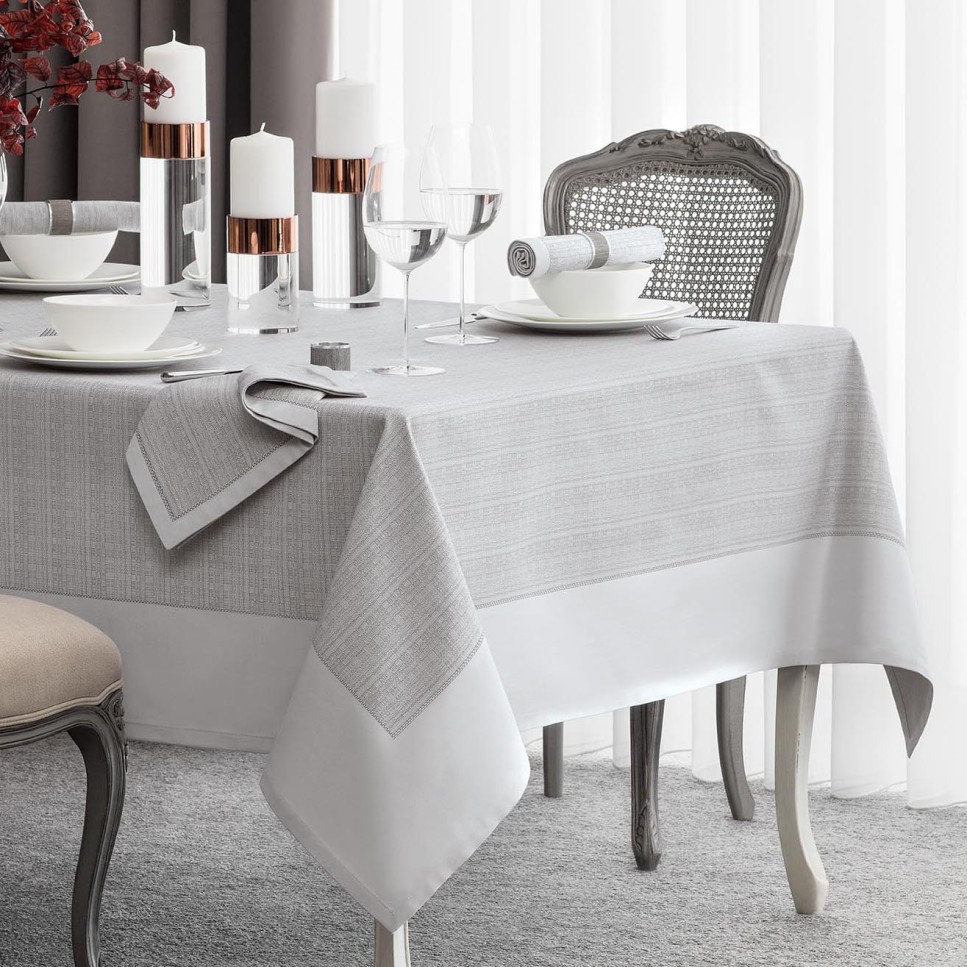Gorgeous Table Cloths: Enhance Your Dining Room Decor
Gorgeous Table Cloths: Enhance Your Dining Room Decor
Blog Article
Linen Textile Developments: Exploring Modern Trends and Creative Applications in Layout and Fabric Industry
From lasting production methods to sophisticated weaving technologies, the development of bed linen is improving the landscape of the fabric industry. As we dig right into the worlds of imaginative design applications and the appearance of bed linen blends and crossbreed fabrics, a new phase unfolds in which bed linen's function in future fabric developments takes center stage.
Lasting Practices in Linen Manufacturing
Sustainable techniques in bed linen production have ended up being progressively crucial in the fabric sector's initiatives to minimize environmental effect and promote moral sourcing approaches. Bed linen, an all-natural fiber stemmed from the flax plant, uses a series of advantages such as biodegradability, resilience, and breathability. Nevertheless, traditional techniques of bed linen production can involve substantial water usage, pesticide use, and energy-intensive processes.
To resolve these difficulties, several fabric makers are embracing sustainable techniques throughout the linen manufacturing procedure. This consists of sourcing flax from organic farms that avoid damaging chemicals and chemicals, carrying out water-efficient retting techniques to remove fibers from the flax stalks, and using green dyes and finishes. Furthermore, some companies are buying sustainable energy sources to power their production facilities and minimizing waste via recycling and upcycling campaigns.
Technical Advancements in Linen Weaving
With the growing emphasis on sustainable practices in bed linen production, the textile sector is now observing a rise in technological innovations particularly intended at revolutionizing the art of bed linen weaving. These advancements are improving the method bed linen fabrics are produced, providing enhanced effectiveness, quality, and imagination in weaving techniques.
Among the vital technological improvements in bed linen weaving is the integration of computerized looms. These sophisticated looms are equipped with software application that permits for complex and complex designs to be woven with accuracy. By digitizing the weaving procedure, producers can achieve better consistency and accuracy in their linen materials.
Furthermore, innovations in yarn spinning technology have enabled the production of finer and more long lasting linen yarns - table cloths. This results in softer and smoother bed linen materials that retain their quality also after multiple uses and laundries
Furthermore, the development of green dyeing processes and finishes for linen fabrics is getting traction. These sustainable methods not just lower the environmental impact yet also deal with the enhancing customer need for morally produced fabrics.
Creative Style Applications for Bed Linen
Ingenious imaginative techniques are progressively forming the creative layout applications for linen in the fabric market. Linen's all-natural aesthetic appeal and capacity to blend with other materials make it a favored option for producing unique garments and accessories that cater to the eco mindful consumer.
Additionally, developers are explore linen in home design, utilizing its breathable and resilient nature to craft fashionable home furnishings such as curtains, bed linen, and upholstery. The texture and drape of linen bring a sense of refinement and convenience to indoor spaces, including a touch of elegance to contemporary homes.

Bed Linen Blends and Hybrid Fabrics

Crossbreed textiles, on the other hand, take the principle of blending a step further by integrating added elements such as metal threads, recycled products, or conductive fibers. These cutting-edge fabrics not only broaden the design opportunities but also present practical facets like conductivity, antimicrobial homes, or boosted resilience. Crossbreed materials are progressively being used in numerous industries, including style, interior decoration, and technological textiles, where the demand for multifunctional products gets on the rise.
Linen's Role in Future Textile Innovations

In the realm of future textile innovations, bed linen is expected to be a vital player in the development of advanced practical textiles. Developers and researchers are discovering methods to boost bed linen's fundamental high qualities with technical advancements, such as including wise textiles, nanotechnology, and efficiency surfaces. These technologies aim to boost linen's performance moved here attributes, making it ideal for a wider variety of applications, from activewear to protective clothing.
Moreover, the combination of bed linen with other all-natural or artificial fibers opens up endless opportunities for creating unique textiles with special residential properties and capabilities. By leveraging bed linen's characteristics and checking out ingenious blends, the textile sector is positioned to present exciting advancements that provide to developing customer requirements and sustainability demands.
Conclusion
To conclude, the exploration of sustainable practices, technical innovations, innovative design applications, linen blends, and its function in future textile advancements highlight the continual development of bed linen fabric in the modern-day design and textile sector. With a concentrate on advancement and creative thinking, the versatility and environmentally friendly nature of bed linen make it a beneficial material for producers and designers alike, leading the way for additional advancements and improvements in the field of textiles.
As we dive right find out this here into the worlds of creative layout applications and the appearance of bed linen blends and hybrid fabrics, a new phase unravels in which linen's duty in future textile developments takes center stage.
Discovering the blend of linen with various other fabrics has led to the emergence of ingenious blends and crossbreed fabrics in the contemporary textile sector. Bed linen blends offer a distinct mix of the features of bed linen with those of various other fibers, resulting in fabrics that possess boosted buildings such as raised sturdiness, improved draping, and reduced wrinkling.The development of linen blends and hybrid fabrics has set the phase for Linen to play a critical function in driving future fabric advancements.In the world of future fabric innovations, bed linen is expected to be a key gamer in the development of advanced functional materials.
Report this page